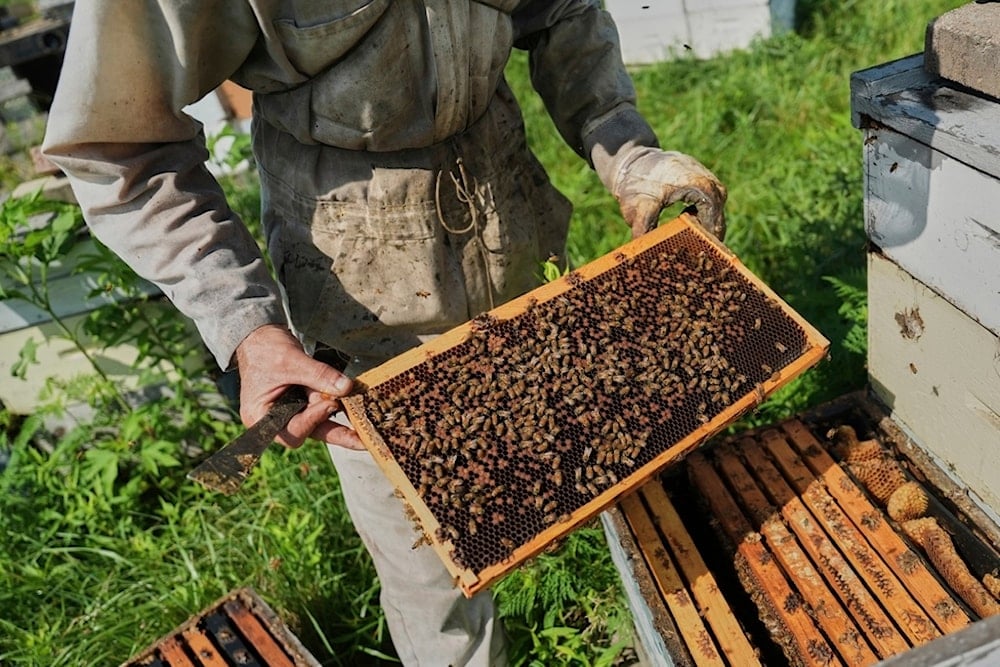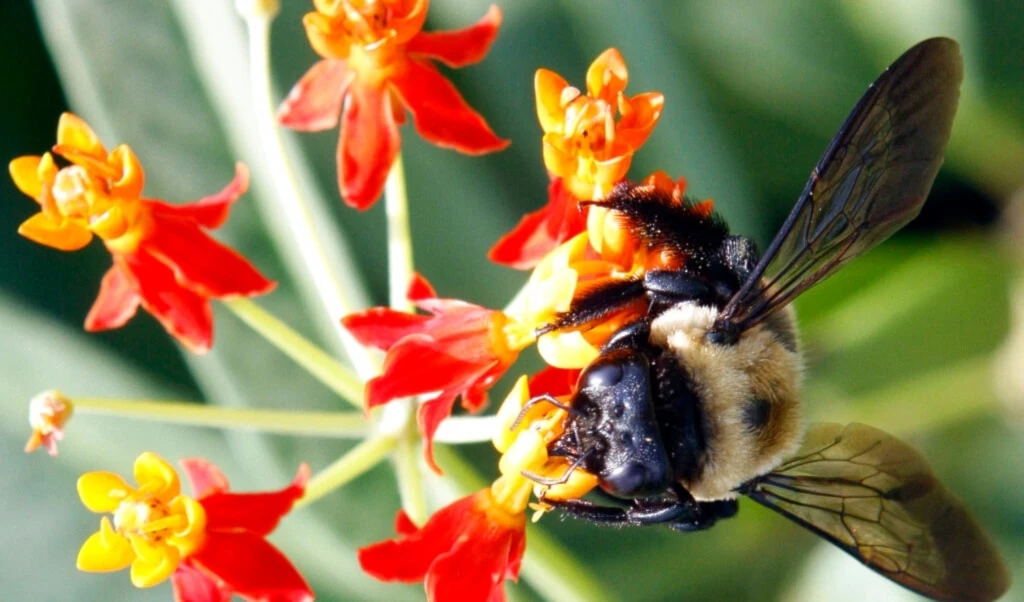Bees in Iraq’s Basra threatened by water crisis and declining honey
Bees in Basra, Iraq, once central to the region’s renowned honey production, are in steep decline due to the rising salinity in the Shatt al-Arab, drought, and extreme heat that have killed thousands of honeybees and damaged apiaries.
-

Isaac Barnes inspects a honeycomb from one of his honeybee hives Tuesday, June 24, 2025, in Williamsport, Ohio. (AP Photo/Joshua A. Bickel)
Along the banks of the Shatt al-Arab in southern Iraq, once-thriving colonies of bees are disappearing. For generations, Basra was known for its honey, with hives nestled among dense date palm groves.
Today, rising salinity, prolonged drought, and extreme heat are devastating honeybee populations and pushing the region’s honey production toward collapse.
“Bees need clean water. The lack of this water leads to their death,” Mahmoud Shaker, a professor at Basra University and longtime beekeeper, told Reuters.
The Shatt al-Arab, formed by the confluence of the Tigris and Euphrates, once supported millions of palm trees and a flourishing ecosystem for bees. But decades of war, climate change, and dam projects upstream have reduced river levels, allowing seawater from the Gulf to push inland.
The result is rising salinity, which has killed trees and flowers vital for honeybees. Summer temperatures in Basra frequently surpass 50°C (122°F), compounding the crisis and making it harder for bees to survive.
“Environmental conditions and salt water have harmed the bees, causing significant losses. Some beekeepers have completely lost their apiaries,” Dr. Mohammed Mahdi Muzaal al-Diraoui, assistant director of Basra’s agriculture ministry office, said to Reuters.
Read more: Nearly half of all EU honey imports likely fraudulent: Study
Basra’s historic honey production in decline
For centuries, Basra’s honey was a prized product. At its peak, the region produced around 30 tons annually. But since 2007, output has steadily declined. In the last five years, production fell to about 12 tons per year, and this season is projected to yield only six tons, an 80% decline from historic highs.
According to al-Diraoui, Basra once had more than 4,000 hives across 263 apiaries. Today, at least 150 apiaries have been damaged, with more than 2,000 hives lost.
The collapse of Basra’s honey industry is emblematic of Iraq’s wider environmental crisis. Less than a quarter of the date palms that once shaded the Shatt al-Arab have survived, down from nearly 16 million to fewer than 3 million. Without vegetation, bees have fewer sources of nectar, and their populations continue to dwindle.
The role of conflict and climate in Iraq’s ecology
Iraq has endured decades of war, from the Iran-Iraq conflict to the US-led invasion of 2003 and the battle against ISIS. But today, its gravest challenge is water security.
Upstream dams, especially in Turkey, have sharply reduced flows in the Tigris and Euphrates. As freshwater dwindles, seawater intrusion worsens salinity in Shatt al-Arab, devastating agriculture and threatening bees.
Read more: World’s first vaccine for honeybees approved
Local beekeepers, many of whom have inherited the craft over generations, now face an uncertain future. Some have abandoned their apiaries entirely, while others continue to fight to preserve honey production despite worsening conditions.
“I expect that if the water crisis continues at this rate over the next year, especially if salt water reaches areas in northern Basra, honey production will come to a complete halt,” al-Diraoui warned Reuters.

 3 Min Read
3 Min Read










